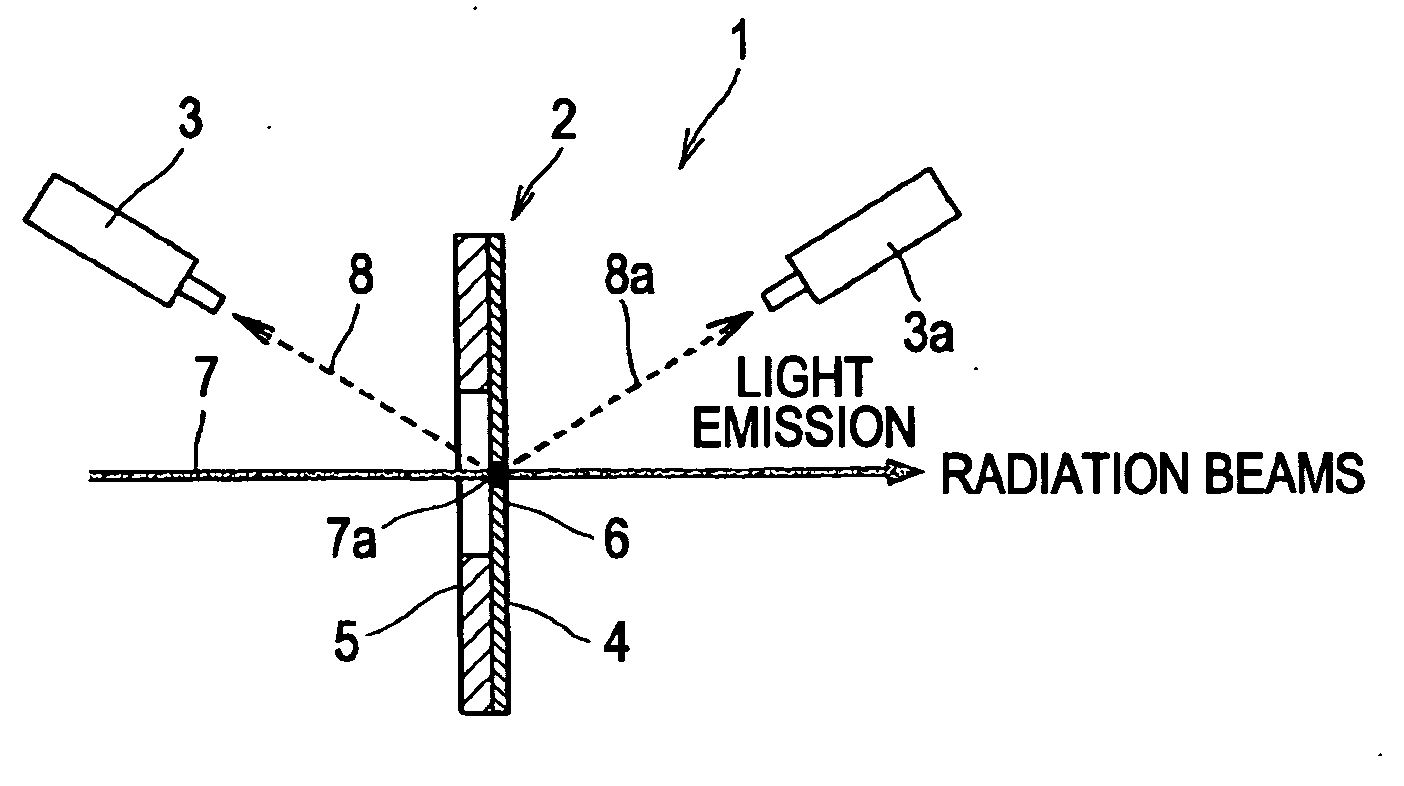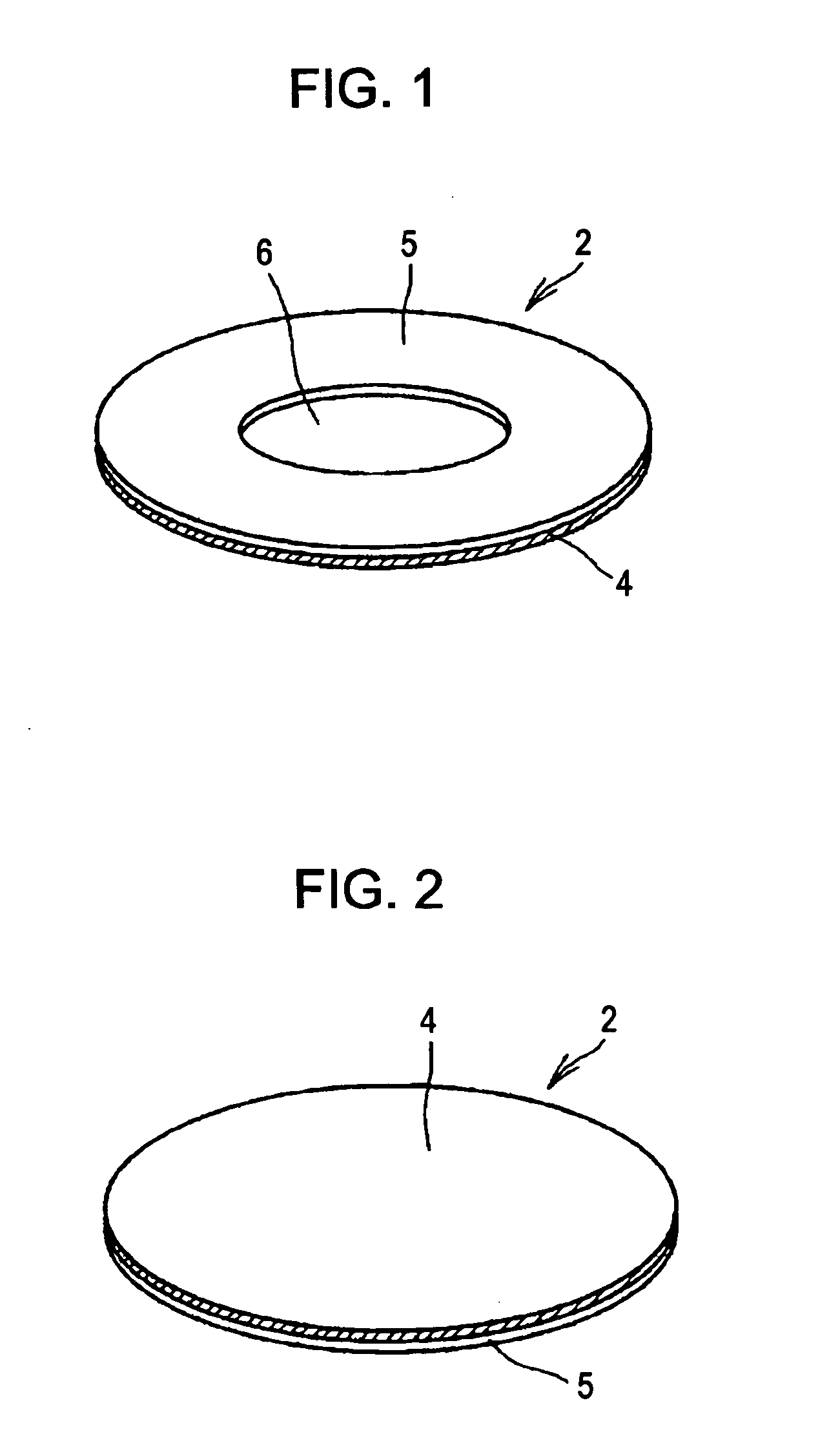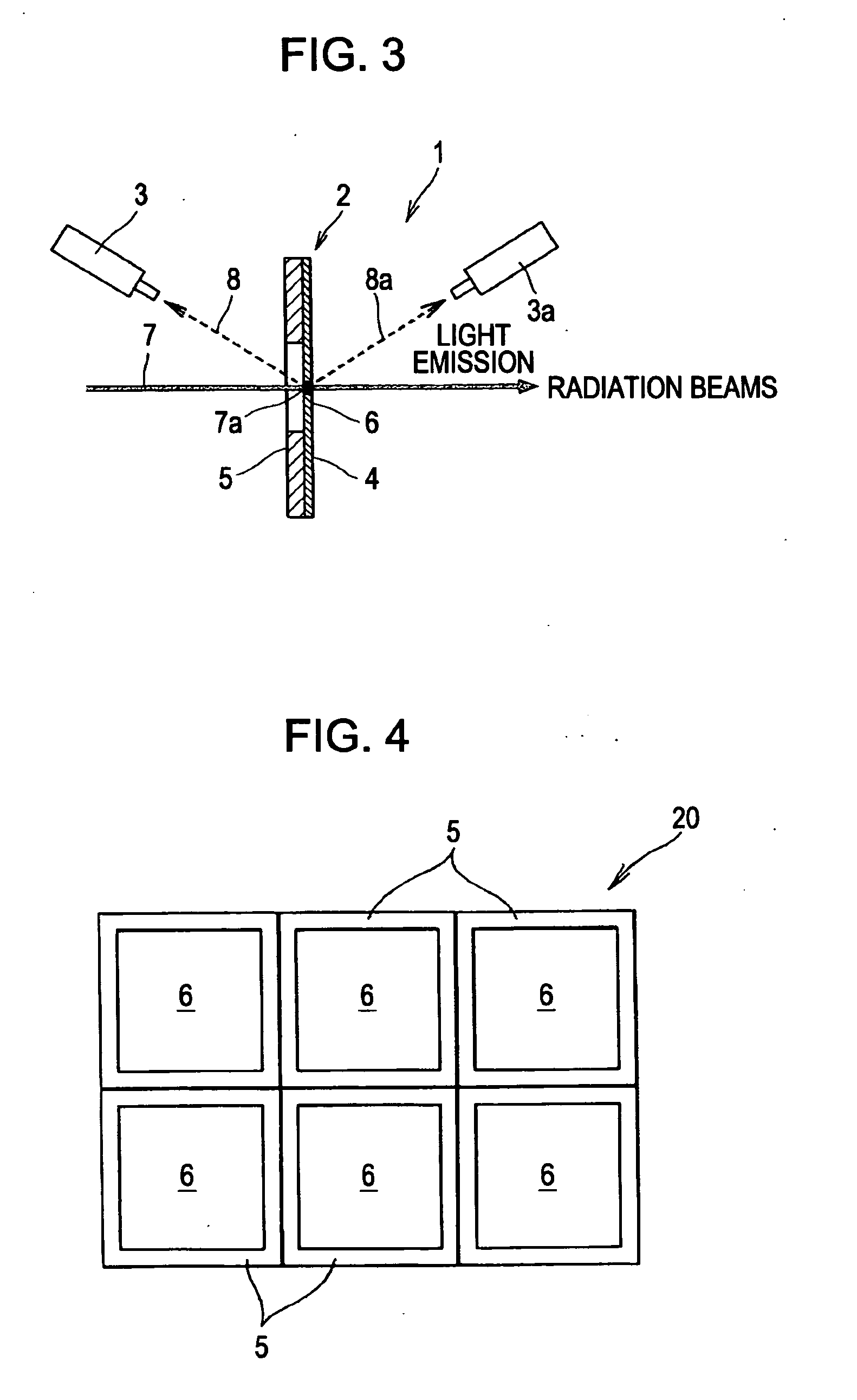Beam Detector and Beam Monitor Using The Same
- Summary
- Abstract
- Description
- Claims
- Application Information
AI Technical Summary
Benefits of technology
Problems solved by technology
Method used
Image
Examples
example 1
[0096]By the following process, the beam detector 2 shown in FIGS. 1 and 2 was formed. First, ultrasonic waves were applied on a silicon substrate having a diameter of 1 inch in an ethanol suspension containing a diamond powder having a diameter of several tens of micrometers, so that a treatment for promoting nuclear generation was performed. After diamond powder adhering on the substrate was washed out, the silicon substrate was placed in a microwave plasma CVD apparatus, so that a diamond film was formed. As a staring gas, a mixed gas containing 1 percent by volume of methane and 99 percent by volume of hydrogen was used. The gas pressure was set to 45 Torr and the substrate temperature was set to 800° C.
[0097]In order to incorporating Si in the polycrystalline diamond film, silane (SiH4) or disilane (Si2H6) diluted with hydrogen was further added to the starting gas, or a silicon wafer piece was disposed beside the silicon substrate. As a result, by film formation performed for ...
example 2
[0100]By a process similar to that in Example 1, diamond doped with boron was formed. In order to dope boron in a polycrystalline diamond film, diborane (B2H6) or trimethylboron (B(CH3)3) diluted with hydrogen was further added to the starting gas, or a piece of boric acid (B2O3) was disposed beside the silicon substrate. As a result, by film formation performed for 20 to 75 hours, a polycrystalline diamond film having a thickness of 15 to 48 μm was obtained. It was confirmed that boron atoms were incorporated in the film at a concentration of 1 to 100 ppm.
[0101]From the boron-doped diamond sample as described above, by a method similar to that in Example 1, part of the silicon substrate was processed by an etching treatment, so that a beam detector was formed. When the beam detector thus formed was irradiated with x-ray beams having an energy of 15 keV, from the polycrystalline diamond film at the irradiation spot, blue-green light emission was observed. In addition, when observati...
example 3
[0102]In a manner similar to that of Example 1, polycrystalline diamond films were formed by incorporating Si, N, Li, Be, B, P and in polycrystalline diamond films each forming a beam detector. When these elements were incorporated in the polycrystalline diamond films, it was confirmed that the light emission of visible light to ultraviolet light was performed from the irradiation spot by the energy of synchrotron radiation. However, as shown in Table 1, the light emission spectra were significantly different from each other by the types of addition elements and the concentrations thereof.
TABLE 1AdditionMethod for Adding ElementLight EmissionElementto Diamond FilmWavelength (nm)SiSiH4 or Si2H6 is added516-539, 738to starting gas.NN2 or NH3 is added to starting gas.389, 415, 516-539, 575LiLi ions are implanted.438BeMetal Be is disposed on a substrate516-539supporting table.BB2H6 is added to starting gas.443, 516-539PPH3 is added to starting gas.230, 516-539SH2S is added to starting g...
PUM
| Property | Measurement | Unit |
|---|---|---|
| Fraction | aaaaa | aaaaa |
| Thickness | aaaaa | aaaaa |
| Thickness | aaaaa | aaaaa |
Abstract
Description
Claims
Application Information
 Login to View More
Login to View More - R&D
- Intellectual Property
- Life Sciences
- Materials
- Tech Scout
- Unparalleled Data Quality
- Higher Quality Content
- 60% Fewer Hallucinations
Browse by: Latest US Patents, China's latest patents, Technical Efficacy Thesaurus, Application Domain, Technology Topic, Popular Technical Reports.
© 2025 PatSnap. All rights reserved.Legal|Privacy policy|Modern Slavery Act Transparency Statement|Sitemap|About US| Contact US: help@patsnap.com



